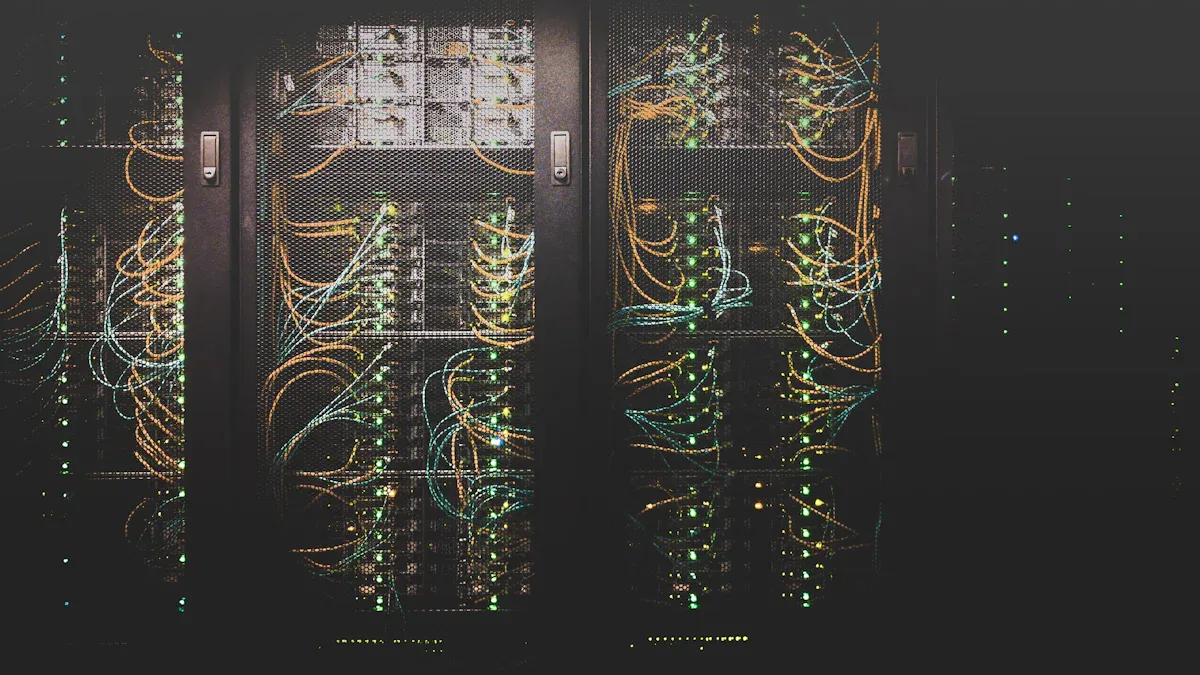Migrating Spark Workloads from Hadoop to Singdata Lakehouse

You want to move your Spark Workloads from Hadoop to Singdata Lakehouse for better results. You see lower costs, faster analytics, and easier management when you make this change.
Cost reduction helps you save money.
Real-time analytics give you fresh insights.
Simplified operations make your work smoother.
NinjaVan improved its data platform by migrating to Singdata Lakehouse. You can do the same and unlock new possibilities.
Key Takeaways
Migrating to Singdata Lakehouse can reduce costs by up to 50%, allowing you to save money for new projects.
Experience faster analytics with insights delivered in less than a minute, enabling quicker decision-making.
Simplify your operations by managing storage and analytics on a single platform, reducing errors and training time for new team members.
Assess your current Spark workloads carefully before migration to ensure a smooth transition and avoid compatibility issues.
Follow best practices during migration to prevent common pitfalls, such as overestimating simplicity and ignoring performance tuning.
Migration Benefits
Cost Reduction
You can save a lot of money when you move your Spark Workloads from Hadoop to Singdata Lakehouse. Many companies see big drops in their messaging infrastructure costs. Some report savings of up to 50% by using AutoMQ. You also get better analytics with Singdata’s incremental engine, which gives you minute-level insights. This means you do not need to spend extra on complex systems. You can simplify your data pipelines and remove the need for Lambda architectures, which often cost more and take more time to manage.
Lower messaging infrastructure costs (up to 50% savings with AutoMQ)
Minute-level analytics with Singdata’s incremental engine
No need for complex Lambda architectures
Tip: You can use these savings to invest in new projects or improve your current systems.
Real-Time Analytics
You get much faster analytics after you migrate. Singdata Lakehouse gives you insights ten times faster than older systems. You can see results in less than a minute, which helps you make decisions quickly. The Lakehouse engine supports sub-minute analytics, so you do not have to wait for long batch jobs. AutoMQ also helps by feeding data into Singdata quickly and reliably. Your Spark Workloads will run smoother and deliver results faster.
Sub-minute analytics for quick decision-making
High-throughput, low-latency messaging with AutoMQ
Simplified Operations
You will notice that your daily work becomes easier. Singdata Lakehouse removes many steps that slow you down. You do not need to manage separate systems for storage and analytics. You can run Spark Workloads on a single platform. This makes your data pipelines simpler and reduces errors. You spend less time fixing problems and more time getting value from your data.
Note: A simpler setup means you can train new team members faster and keep your systems running smoothly.
Preparation
Assessing Spark Workloads
You need to understand your current Spark Workloads before you start migration. Begin by auditing your Spark usage. List the versions, configurations, libraries, data sources, and deployment environments you use. This helps you see what you have and what you need to move. Next, set up a Spark 4.0 test environment. Use this space to validate your workloads without affecting your main operations.
Tip: Testing in a sandbox lets you catch problems early and keeps your production data safe.
You can use special tools to check if your Spark Workloads are ready for migration. The table below shows two helpful options:
Tool | Purpose |
|---|---|
Apache Atlas | For metadata management and data lineage |
Talend Data Inventory | For data profiling and quality checks |
Planning Strategy
You should plan your migration with care. Moving Spark Workloads from older versions to Spark 3.x brings many improvements, but also technical challenges. You need a strategy that fits your data and business needs. Here are some common approaches:
Strategy | Pros | Cons | Use case |
|---|---|---|---|
Big Bang | Fast, single cutover | High risk, longer downtime | Small/moderate data volumes |
Phased | Lower risk, more control | Needs tight coordination | Complex, mission-critical data |
Hybrid/On-demand | Flexible, less disruption | More planning needed | Multi-system, variable workloads |
Think about your workloads, API needs, maintainability, and performance. Each factor helps you choose the best strategy.
Setting Up Lakehouse
You must prepare your Singdata Lakehouse to support Spark Workloads. Start by using an existing data lake with open formats like Parquet or ORC. Add metadata layers for better data management. Tools such as Apache Iceberg, Delta Lake, or Apache Hudi help you manage data and keep it safe. Apache Iceberg gives you ACID transaction support, snapshot isolation, and schema evolution. These features protect your data and make changes easier.
Make sure your analytics engine supports the lakehouse setup. Engines like Apache Spark, Trino, or Dremio work well. You need to download the right libraries and add them to your Spark environment. Configure your Spark session to use the Delta catalog and SQL extension.
Note: Good setup means your Spark Workloads run smoothly and your data stays reliable.
Migration Steps

Data Transfer
You need to move your data from Hadoop to Singdata Lakehouse with care. Start by making sure you know the scope of your migration. Set clear timelines and assign resources. Talk to all business units about planned downtime so everyone stays informed.
Before you move any data, check it for accuracy, completeness, and consistency. This step helps you avoid surprises later. Use automated tools to handle the migration. These tools can monitor data integrity and manage any needed transformations.
Assess your data early for quality.
Automate the migration process to reduce errors.
Document every step for future reference.
Tip: Good documentation helps you troubleshoot issues and train new team members.
Migrating Spark Workloads
You must follow a series of steps to migrate Spark Workloads from Hadoop to Singdata Lakehouse. This process ensures compatibility and keeps your data safe. Here is a step-by-step guide:
Install Apache Spark using the standard installation process.
Set up MinIO, which you can deploy with Kubernetes or Helm Chart.
Configure Spark and Hive to use MinIO instead of HDFS. You can do this through the Ambari UI.
Adjust the
core-site.xmlfile to include S3a configuration with MinIO settings.Update Spark2 configuration with properties for MinIO integration.
Change Hive settings to improve performance with MinIO.
Restart all services after making these changes.
This approach helps you move your Spark Workloads smoothly. NinjaVan followed a similar process when they migrated to Singdata Lakehouse. They saw faster analytics and easier management after the migration.
Note: Always test your workloads in a sandbox before moving to production.
Security and Governance
You must keep your data secure during and after migration. Use Unity Catalog to manage permissions and control access to your data assets. Set up identity federation for centralized user management. This step makes it easier to give the right people access.
Adopt a Data Mesh approach. This method lets different teams own their data, which improves accountability. Use Terraform templates to automate resource deployment and keep your security settings consistent.
Follow these steps for strong security:
Create separate environments for development, testing, and production.
Set up network isolation and data encryption.
Use Delta Lake to maintain data quality and consistency.
Alert: Never skip security checks. Strong governance protects your business and builds trust.
SQL/BI Integration
You want your business users to get value from the data in Singdata Lakehouse. Connect your SQL and BI tools to the new platform. Most modern BI tools support open formats like Parquet and Delta Lake. Make sure your Spark session uses the right catalog and SQL extensions.
Test your dashboards and reports after migration. Check that all queries return correct results. Train your team on any new features or changes in the workflow.
Step | Action |
|---|---|
Connect BI tools | Use JDBC/ODBC drivers for Spark SQL |
Validate queries | Run sample reports and compare results |
Train users | Offer quick guides and hands-on sessions |
Tip: Early testing and training help your team adapt quickly and avoid disruptions.
Migration Challenges

Compatibility Issues
You may face compatibility problems when moving Spark workloads from Hadoop to Singdata Lakehouse. Architecture differences can cause confusion. Hadoop services often do not work well in cloud-native environments. You might see issues with SQL dialects and data formats. Some users report that data silos block important projects because data gets stuck in different locations. You need to check your data sources and make sure your Spark version matches the Lakehouse requirements.
Tip: Test your workloads in a sandbox before full migration. This helps you catch compatibility issues early.
Common challenges include:
Blocked projects due to data silos
Unsupportive Hadoop services for cloud-native setups
Performance Tuning
Performance can drop if you do not tune your system after migration. You must adjust cluster size, instance numbers, and scaling parameters. Some users see run-time quality issues when they move to a new platform. NinjaVan improved their ETL processing speed by six times and boosted BI query performance by up to ten times after tuning their setup. You should plan for optimization because techniques differ from those in traditional databases.
Note: Do not ignore serving layers. Some layers are essential for handling high-throughput queries.
Data Integrity
You need to protect your data during migration. Poor planning can lead to data loss or errors. Always check for accuracy, completeness, and consistency. Unified real-time and offline data streams help improve data processing. Atlas finished their migration in half a month by working together and keeping data quality high. Use tools for data profiling and lineage to track changes.
Validate data before and after migration
Use metadata management tools
Monitor data streams for errors
Best Practices
You can avoid common pitfalls by following best practices. Many people think migration will be simple, but hidden complexities can delay projects and increase costs. You must understand that a lakehouse needs a different approach than a traditional database. Plan for optimization and cluster management.
Common Pitfalls During Migration | Description |
|---|---|
Overestimating simplicity | Migration projects often become complex and costly. |
Misunderstanding data architecture | Lakehouse design differs from RDBMS. |
Ignoring serving layers | Some layers are needed for performance. |
Inadequate planning for optimization | Optimization methods are not the same as RDBMS. |
Poor cluster management | Bad decisions can hurt budget and speed. |
Alert: Careful planning and testing help you avoid costly mistakes and keep your migration on track.
Migrating Spark workloads to Singdata Lakehouse gives you better performance and easier management. You should start by assessing your environment, defining your goals, and identifying challenges. After migration, improve your data lake by switching to Delta Lake and removing unnecessary workarounds. Singdata Lakehouse offers unified storage, ACID transactions, and cost-effective scalability. You need to check your file formats and partitioning to keep your workloads running smoothly.
Feature | Benefit |
|---|---|
Centralizes all your data | |
ACID Transactions | Keeps your data reliable |
Cost-Effective Scalability | Saves money as you grow |
Tip: Careful planning and regular reviews help you get the most from your new platform.
FAQ
What tools help you migrate data from Hadoop to Singdata Lakehouse?
You can use Apache Iceberg, Delta Lake, or Apache Hudi for data management. Automated migration tools like Talend or Apache NiFi help you move data safely and quickly.
How do you keep your data safe during migration?
You set up strong access controls with Unity Catalog. You use encryption for all data. You monitor data quality with tools like Apache Atlas. Always test your migration in a sandbox first.
Can you run your old Spark jobs on Singdata Lakehouse?
Most Spark jobs work after you update configurations and libraries. You may need to adjust SQL queries for compatibility. Test each job before moving it to production.
What should you do if you see performance issues after migration?
You should tune cluster size and scaling settings. You can optimize queries and storage formats. Use monitoring tools to find bottlenecks. NinjaVan improved speed by adjusting their setup.
See Also
A Comprehensive Guide to Safely Link Superset with Singdata Lakehouse
Enhancing Dataset Freshness by Linking PowerBI with Singdata Lakehouse
An Introductory Guide to Spark ETL for Beginners
The Significance of Lakehouse Architecture in Modern Data Management

